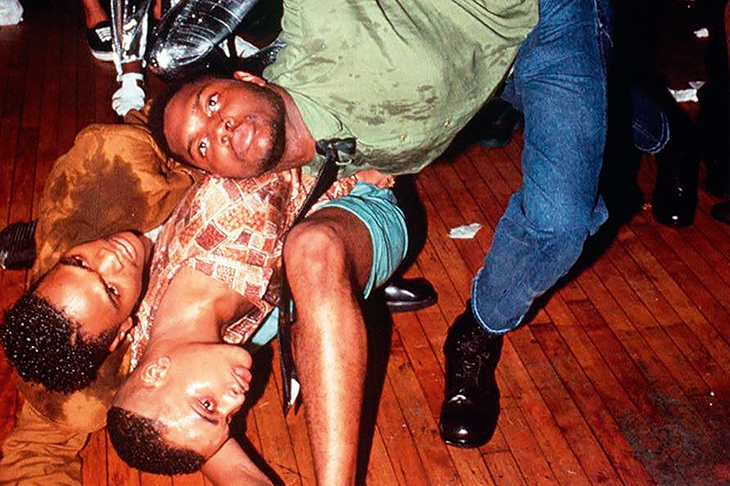It’s dance — but not as you know it. A giddy mass of flying limbs, sashaying hips and pouty faces. Hands now stretched up high and fluttering as in flamenco, now on the ground buttressing cantilevered bodies and holding on to legs that seem to want to escape their owners. ‘I saw things I never saw before,’ David Byrne said after viewing a voguing battle in 1989.
Don’t be fooled by the playfulness of the camp. Voguing is an art, a sport, a way of life — a combative display of agility that grew out of the American drag ball. Its first blaze of mainstream glory was in the 1980s, when the scene hypnotised fashion and pop and catapulted voguing to becoming the flamboyant subcultural export it is today.
The historian Tim Lawrence dates underground drag balls back to 1869, when Harlem’s Hamilton Lodge threw its first queer masquerade ball. ‘A scene whose celestial flavor and cerulean coloring no angelic painter or nectarish poet has ever conceived… lit up like high mass,’ wrote co-novelists Charles Henri Ford and Parker Tyler in the 1930s. By then an annual convention, each gala featured a ‘parade of the fairies’, a drag procession that would come to inspire the gay pride marches.
To outfox the police, same-sex couples danced in drag. Music was jazzed up, waltzes queered. This overturning of norms laid the foundations for the 1960s Harlem parties and then the 1980s vogue-ball explosion.
The most prized characteristic in a ball performer was ‘realness’, the skill of appearing realistically heterosexual when in drag — the artful masquerade of living in the closet, you could say. A panel of merciless judges and a vocal crowd would award contestants trophies for optimum ‘realness’.
Vogue queens promenaded down a central catwalk dressed in furs, sequins and pearls.








Comments
Join the debate for just £1 a month
Be part of the conversation with other Spectator readers by getting your first three months for £3.
UNLOCK ACCESS Just £1 a monthAlready a subscriber? Log in